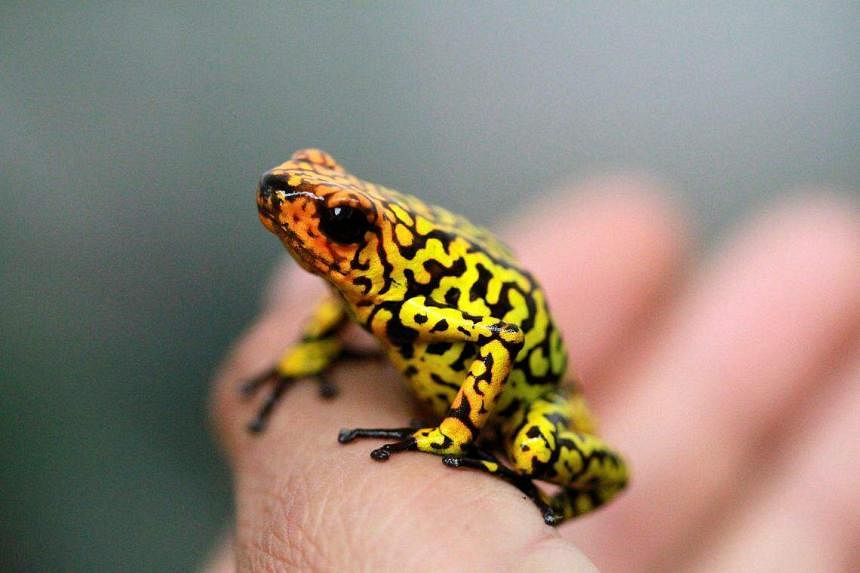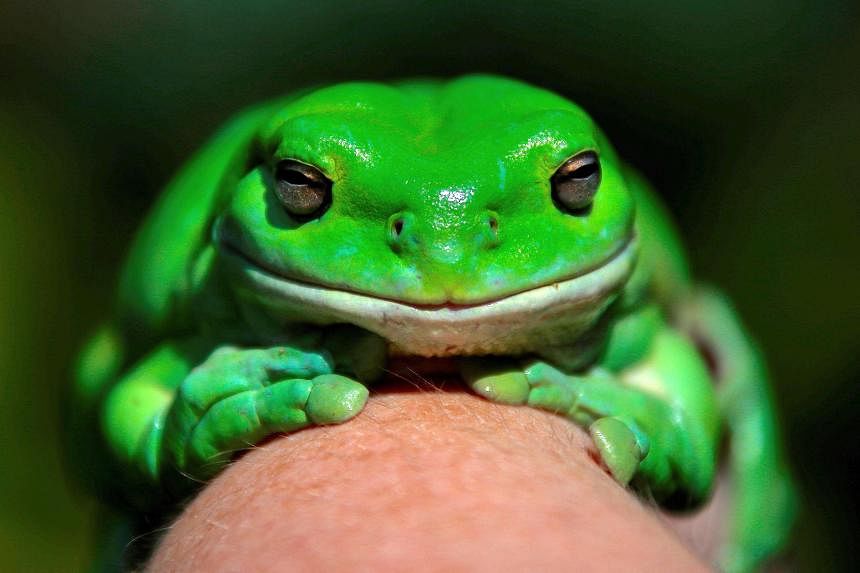WASHINGTON – Earth’s amphibians – from the thorny spike-thumb frog to the red knobby newt, West African giant squeaker, ornate tree toad and fire salamander – are being pushed closer to the brink due to habitat destruction, disease and climate change, with 41 per cent of species now threatened with extinction.
Those are the findings of a new global assessment unveiled by conservationists on Wednesday of 8,011 species of amphibians – vertebrates that inhabit both aquatic and terrestrial habitats. The state of the world’s amphibians is more dire now than at the time of the first such assessment in 2004, when 39 per cent of species were threatened, according to updated data for that period.
Human activities and climate change have upset our planet’s delicate balance, to the detriment of its fauna and flora. Amphibians are in the worst shape among vertebrates – with 27 per cent of mammals, 21 per cent of reptiles and 13 per cent of birds found to be threatened with extinction in separate assessments.
The amphibian assessment involved a worldwide collaboration by more than 1,000 experts. Finding a species to be threatened with extinction means it has been evaluated as “critically endangered”, “endangered” or “vulnerable” on the “red list” of threatened species of the International Union for Conservation of Nature (IUCN), the global authority on wildlife extinction risk.
“For the most part, protected area identification and conservation planning are geared towards the needs of mammals and birds. Amphibians are falling through the cracks,” said conservationist Jennifer Luedtke of the Texas-based global non-profit Re:wild, co-coordinator of the IUCN Amphibian Specialist Group’s red list authority and lead author of the study published in the journal Nature.
Amphibians first appeared more than 300 million years ago. Three orders of amphibians exist today: salamanders and newts (60 per cent threatened with extinction); frogs and toads (39 per cent); and the limbless and serpentine caecilians (16 per cent). Since 2004, 306 species have crept closer to extinction, the study found.
“What is needed now is a global movement to catalyse the recovery of the world’s amphibians,” Re:wild conservationist and study co-author Kelsey Neam said.
The researchers identified four amphibian species – a frog from Australia, a frog from Guatemala, a salamander from Guatemala and a toad from Costa Rica – that have disappeared since 2004. They also listed 185 species as “possibly extinct”, with no known surviving population.
Habitat destruction and degradation, caused mostly by animal agriculture and crops, remained the most common danger, affecting 93 per cent of the threatened amphibian species. But a growing proportion of species was being imperilled by disease and climate change, the researchers found.
“Amphibians are particularly sensitive to changes in their environment, in part because they breathe through their skin,” Ms Neam said.
“So the effects of climate change – increased frequency and intensity of extreme weather events, changes in moisture and temperature, sea-level rise and fires – can result in the loss of key breeding sites, increased mortality, habitat degradation, and habitat shifts that make it harder for amphibians to find suitable places to live,” Ms Neam added.
While an amphibian pandemic involving a fungal pathogen that causes the disease chytridiomycosis has waned, there is fresh concern that another fungal pathogen seen in Asia and Europe may enter the Americas. The study also cited ongoing threats from the animal trade and human hunting for food.

The heaviest concentrations of threatened amphibians were found to be in the Caribbean islands, Mexico and Central America, the tropical Andes region, India, Sri Lanka, Cameroon, Nigeria and Madagascar.
“Amphibians have evolved into an incredible diversity of sizes, colours and behaviours. They can be as tiny as a common housefly – Macaya breast-spot frog – and as long as a cow – Chinese giant salamander,” Ms Neam said.
“Amphibians are our allies in understanding the health of our planet,” Ms Luedtke said. “When we protect and recover amphibians, we protect and restore terrestrial and aquatic ecosystems, we safeguard the genetic diversity of our planet, and we invest in a future in which all life – including human life – thrives.” REUTERS

